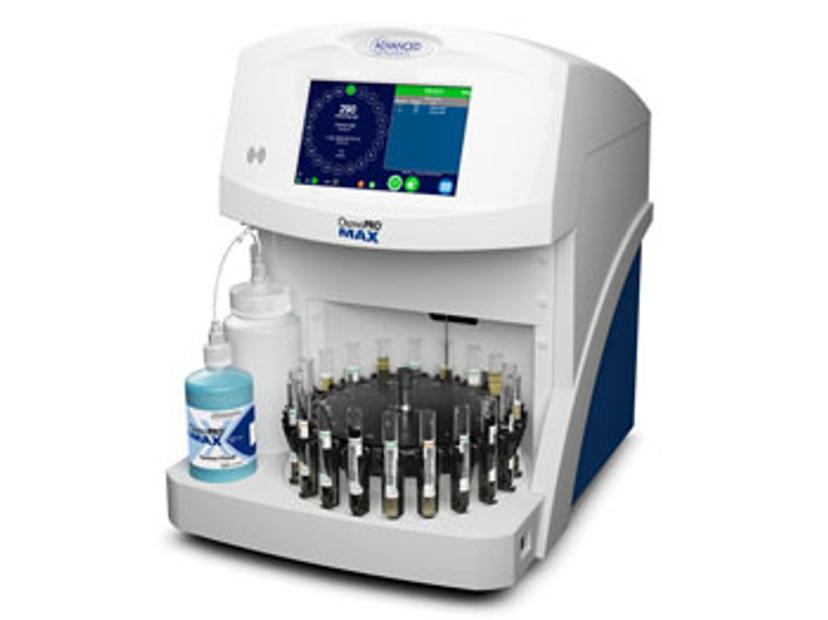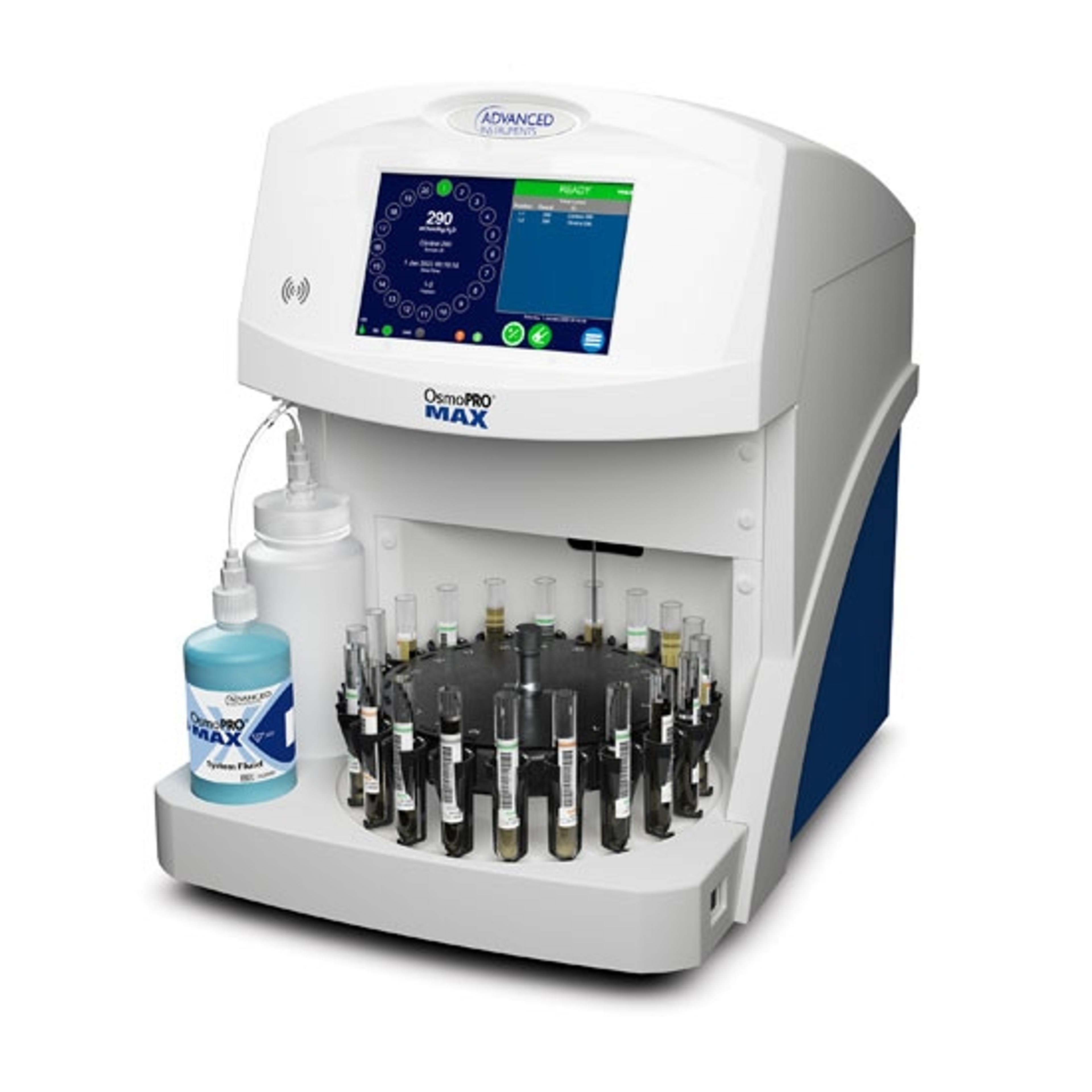How automated osmometers optimize clinical lab workflows
Hear from experts on how active customer collaboration helps to develop a clinical instrument designed to enable efficient, accurate and timely results crucial to enhance patient care
31 Jul 2022

In this exclusive SelectScience® interview, we speak with Julie MacKenzie, Senior Manager for the Clinical Product Portfolio, and Adam Leonard, Clinical Product Manager at Advanced Instruments, to find out more about how they work with customers to understand key challenges that clinical laboratories face today and how that insight is integrated into the product development process. To successfully meet clinical testing demand in the face of hurdles, laboratories need specialized tools, such as automated osmometers, that enable workflow efficiency and empower their staff, while also assisting physicians to improve patient care.
The world of clinical testing finds itself in a transformative time. The past decade has seen a surge in the adoption of automation in clinical laboratories, as labs grapple with an increase in demand for clinical tests. While this situation is a testament to the constantly improving healthcare provision systems worldwide – it is not without its challenges for the labs that supply the testing results. A key challenge that clinical laboratories face is that of a shortage of specialized staff needed to run clinical tests. Globally, small, and large hospitals alike are facing staffing shortages, as a result of which overworking and high turnover are common. Automation of laboratories and testing is heralded as one of the solutions to take the load off the clinical staff. “We’ve heard from labs that automated solutions are rarely available at an affordable price point. This only stretches operating expenses for clinical laboratories and serves to worsen the situation,” explains Leonard.
Designing a customer-centric product
The key to tackling such issues is designing solutions with active customer collaboration, which will help to deliver on market needs and ease end-user pain points. As a global leader in instrument development and manufacturing, this ideology is core to the approach Advanced Instruments takes to product development. “At Advanced Instruments, we take a continual, customer-centric approach to designing solutions, an attitude that starts right from product conception,” explains MacKenzie. Advanced Instruments does this by using inputs from product development customer feedback panels to develop each of its products, working with the panel closely throughout the development process. The panel consists of their customers, from small to large laboratories, and key opinion leaders (KOLs) from different parts of the world. “Breaking down walls and collaborating with our customers helps us hear about the challenges that we need to help laboratories overcome. This is what inspires us to develop the right product,” explains MacKenzie. Leonard adds that another crucial aspect of their product development process is the collaboration and synergy within the company’s different teams, from design to production, which enables a cohesive design that will come to life.
To demonstrate the true impact of having a customer-centric product development process, MacKenzie turns to the critical test of osmolality – the measurement of concentrations of dissolved particles in a sample – as an example. “Conducting an osmolality test has a wide variety of use cases. It enables physicians to promptly narrow down the differential diagnosis from a hundred possibilities to fewer than a dozen. They rely on accurate and precise results with a quick turnaround time. For example, it can be used to determine the cause of an electrolyte disorder like hyponatremia, or whether a patient has ingested alcohols either accidentally or intentionally,” she explains. “Such vital information can enable prompt care, while also saving the cost of a patient staying an extra night in the hospital. This is why osmometers – the instruments used to measure osmolality – are viewed today as low-cost, high-value screening tools.”
Optimizing workflow efficiencies and operating expenses
To fully deliver on the true value of automated osmometers for laboratories, Advanced Instruments has created an osmometer development customer feedback panel consisting of clinical labs that conduct osmolality testing from North America, Europe, and Asia. This panel has since worked with the company to provide crucial feedback that enhanced their idea’s value proposition, helping to turn an osmometer model to an operational prototype, and then to the final marketed product. Introducing the end-result, the OsmoPRO® MAX, MacKenzie describes, “The OsmoPRO MAX is an osmometer that is designed to make osmolality testing easier and more efficient than with previous models. This is enabled by innovative flow-through technology that eliminates the need for consumables, allowing users to continuously load patient samples to improve turnaround times to physicians. It is also aided by automated testing directly from primary tubes, which eliminates manual pipetting and reduces the potential for errors.” The OsmoPRO MAX is delivered factory-calibrated, and subsequently requires recalibration as infrequently as once a year. MacKenzie points out that this allows operating expenses for the laboratories to be kept to a minimum.
The feedback from one of the hospital laboratories on the Advanced Instruments panel – Hennepin Healthcare in Minnesota in the United States – has shown how welcome the value of low maintenance and continuous loading of the OsmoPRO MAX is. “The Hennepin Healthcare laboratory loves that they will not have to replace consumables, such as sample cups and wiper rings,” shares MacKenzie, recalling their feedback. “Moreover, with the OsmoPRO MAX, they will only replace the system fluid after every 500 tests, considerably reducing the level of instrument cleaning and maintenance otherwise required.”
Prioritizing clinical workloads and small footprints
Additionally, the feature of continuous sample loading allows laboratories to move away from batch testing and improve turnaround times, helping manage staff workloads better. This can positively help to improve the staffing shortages that clinical laboratories face globally, improving working hours and employee wellbeing, which has not gone unnoticed by those on the panel. Leonard points to the positive feedback they received from a UK site, University Hospital of Wales, who reported that their laboratory’s night staff were often extremely busy when the samples arrived. As a result, they were often forced to rest their samples and opt for batch testing instead. “With the OsmoPRO MAX, batch testing will no longer be necessary. Since there is no need to empty and reload sample cups, the instrument will enable laboratories to run samples as soon as they arrive.”

Another positive that has been noted about the instrument is its small footprint, explains MacKenzie. The Hennepin Healthcare laboratory shared that they appreciated that the OsmoPRO MAX was small enough to fit easily within their lab, which was important due to space constraints.
Automated osmometers for laboratories of all sizes, big and small
To add to the above strengths that this instrument provides, what differentiates the OsmoPRO MAX from Advanced Instruments previous products, as well as other competitor osmometers, is that it has been built to fit the needs of labs of all sizes. “If you look at most osmometers in the market today, you will notice ‘single-sample’ or ‘multi-sample’ in the name of the model. But with the OsmoPRO MAX, it can deliver efficiencies with both high volumes and low volumes of samples, making the single-sample versus multi-sample consideration moot,” says MacKenzie.
“This is only possible because the focus of the product development process behind the OsmoPRO MAX was centered on maximizing ease of use,” says Leonard. Eliminating manual pipetting reduces the training and skill level required to operate the instrument, minimizing the burden on the laboratory staff. Game-changing features like onboard video instructions on the OsmoPRO MAX are also a by-product of this. Laboratories like Hennepin Healthcare have noted that the video instructions pre-loaded on the instrument are extremely helpful for newer lab technologists, as it provides them with the confidence of using the system independently across shifts.
Enhancing automation and 24/7 functioning in laboratories
Quality control and data management have also been pain points that the OsmoPRO MAX was designed to solve, aiming to reduce transcription errors, minimize paperwork, enhance flexibility, and save personnel time. Built-in features like badge scanning capability help improve the ease of obtaining sample traceability, highlights MacKenzie. Onboard QC and real-time alerts on the instrument’s home screen allow users live information for monitoring daily QC, with useful alerts on out-of-range QC parameters. The software on the OsmoPRO MAX also permits exporting of test results to laboratory information systems (LIS), USBs, or a printer to enhance the ways laboratories can customize their data management.
The OsmoPRO MAX also boasts of an online peer group program that allows automatic sharing of QC data. The Hennepin Healthcare laboratory commended the upgraded feature of direct data transfer from the instrument, stating that allowing a laboratory to compare QC data to its peers is indeed valuable. Another American customer, a children's hospital in Massachusetts, has highlighted that as a lab that currently inputs all its results manually, features like badge scanning and LIS functionality would be highly appealing to automate and transform their result transmission process.
“We recognize that our customers work hard, and that their challenge is to maximize uptime and minimize downtime because their laboratories operate round the clock. And in designing the OsmoPRO MAX, we have aimed to provide them with an instrument that can be powered 24/7 as well,” shares MacKenzie. Leonard concurs with this, further emphasizing that a key strength of the OsmoPRO MAX is its simplicity. Ensuring that it meets the level of automation required by laboratories around the world today, the instrument can run tests with a single push of a button. And this is aligned with all of the responses that Advanced Instruments has received, says MacKenzie, pointing to the feedback another customer, Cochin Hospital in France provided, “The OsmoPRO MAX is a major advancement in technology. It makes performing osmolality testing easy, making it invaluable to the laboratory."
Future impact: Enhancing patient care
The methodical and meticulous development process behind the development of the OsmoPRO MAX means that this instrument will quickly become a staple in labs of all sizes, globally. MacKenzie says, “improving workflow efficiencies is a key priority for us and you will see that across our clinical product portfolio. With the OsmoPRO MAX, we have aimed to reduce the burden on laboratory technicians, enabling them to do more with minimal walk-away operation, freeing them up to prioritize other tasks.” The end-goal is to do more than just improve accuracy and precision, MacKenzie confides; it is to provide results in the shortest turnaround time in a manner that integrates seamlessly into the laboratory's workflow, while also being suited to technician and physician needs, ultimately enabling timely patient treatment.

